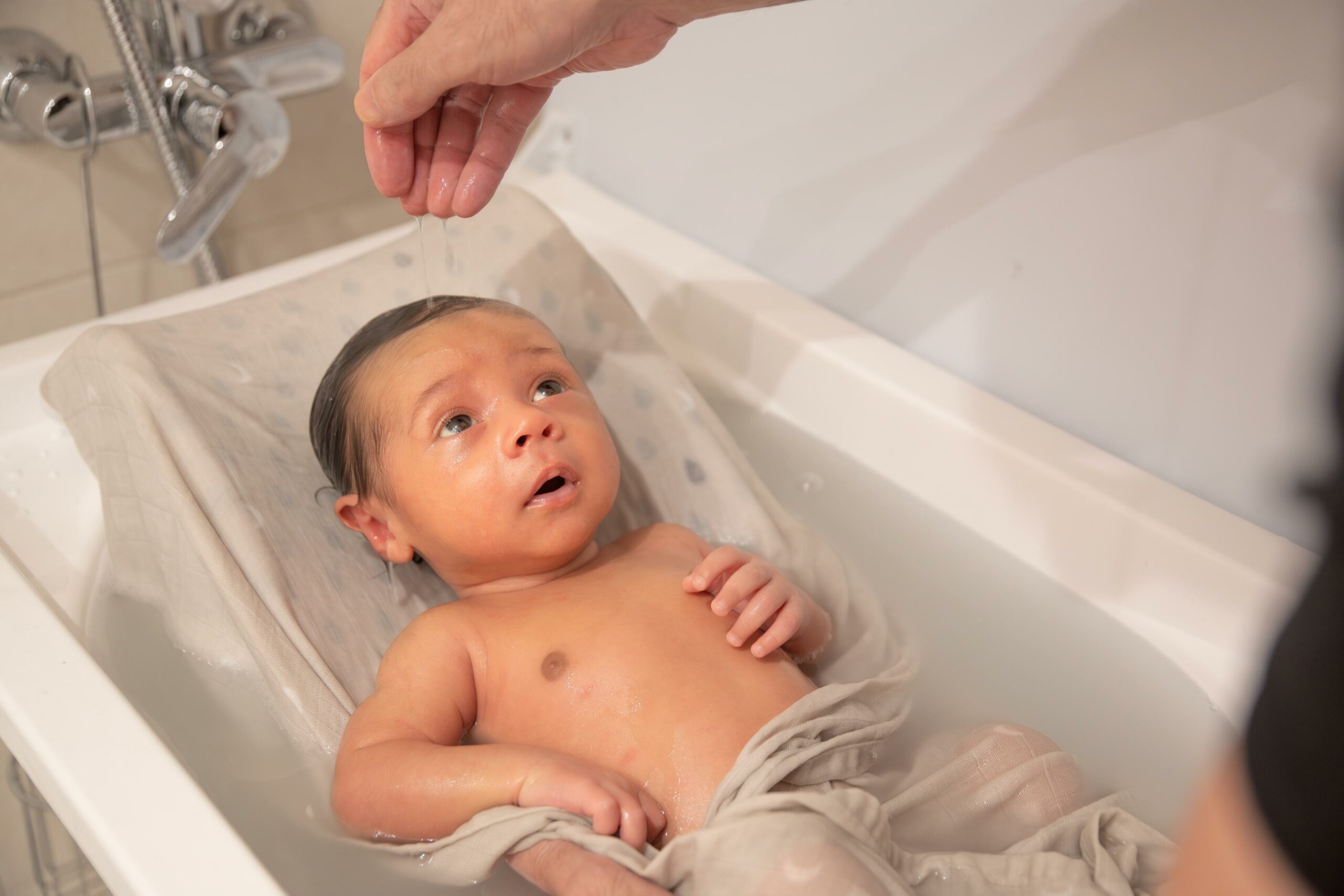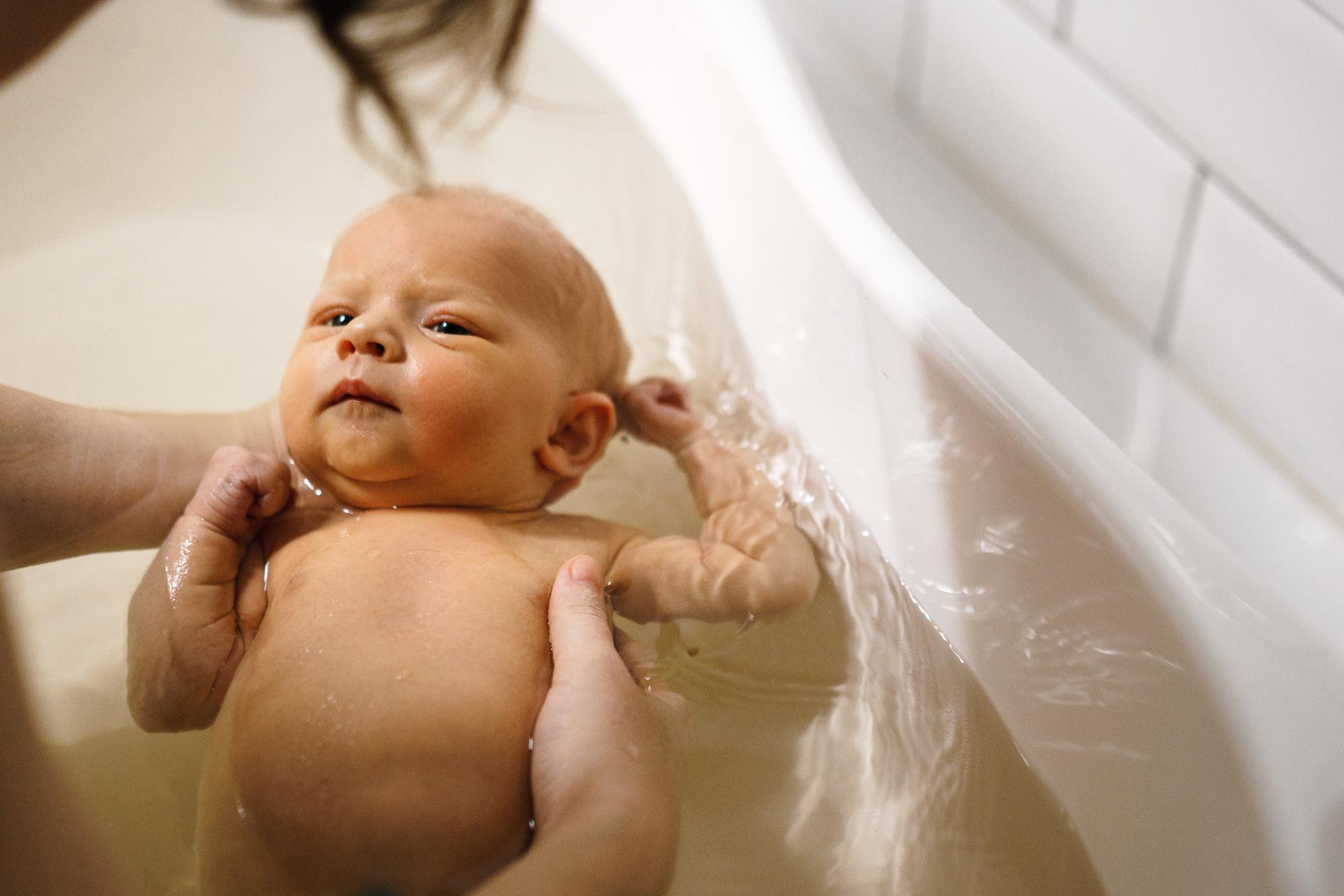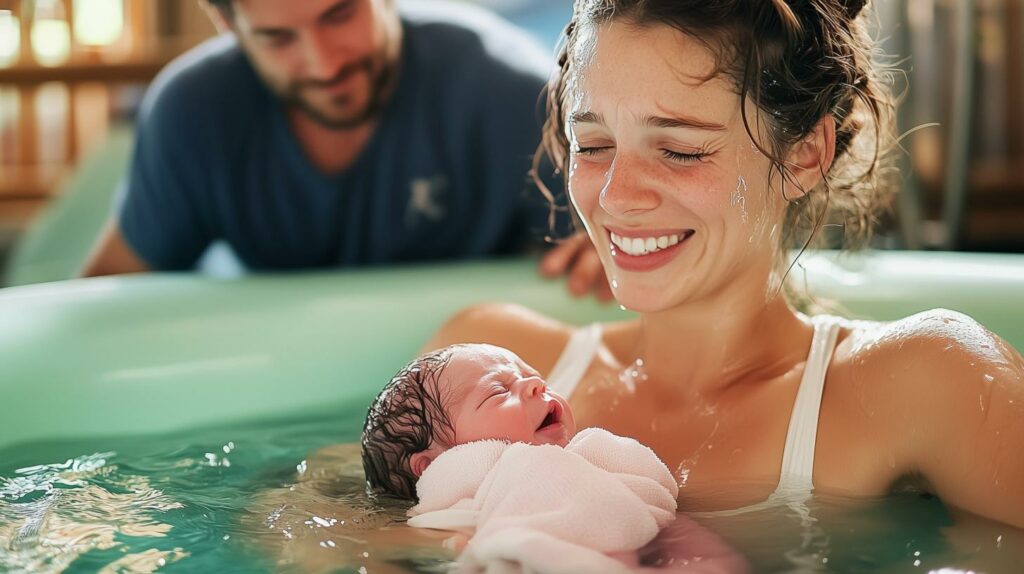
Bath time is one of the most cherished moments for new parents, but it’s also natural to have questions: “What if water gets into my baby’s ears?” or “Could it lead to an infection?” These are valid concerns, and the good news is that with a few simple precautions, you can make bath time both safe and enjoyable.
In this guide, we’ll clear up common myths, share expert tips on ear care, and even test your knowledge with a fun quiz at the end.
Key Takeaways
- Bath your baby 2–3 times a week using clean, lukewarm water (37–38°C or 98.6–100.4°F).
- Water exposure during bath time does not cause hearing loss.
- Watch for signs of ear infections like fever or ear rubbing and seek medical advice if needed.
Is Water in Baby’s Ears Dangerous?
If you’ve ever worried about water getting into your baby’s ears during bath time, you’re not alone. The good news? For most healthy infants, water exposure is harmless. The ear’s natural structure prevents water from reaching sensitive areas like the middle ear or eardrum.
However, excessive water exposure or improper drying can sometimes lead to irritation or infections. A quick tilt of your baby’s head after bath time allows water to drain naturally.
Fact Check
Myth: Water causes ear infections.
Truth: Ear infections are more likely caused by bacteria, colds, or allergies.
Myth: Water leads to hearing loss.
Truth: Hearing loss is typically caused by infections, genetics, or noise exposure.
According to the American Academy of Pediatrics (AAP), ear infections are among the most common conditions in infants, with nearly 75% experiencing at least one by age three. Read more about ear infections here.

How to Safely Bathe Your Baby
Creating a safe bath routine can feel overwhelming, but a few easy habits can make all the difference.
Water Temperature
The right water temperature is crucial for your baby’s comfort and safety. Lukewarm water, ideally between 37–38°C (98.6–100.4°F), is perfect. Use a bath thermometer or test with your wrist to ensure it feels warm but not hot.
Frequency
Newborns don’t need daily baths. Bathing two to three times a week is sufficient to maintain hygiene while protecting their delicate skin.
On non-bath days, you can use a damp cloth to wipe their face, neck, and behind the ears.
Ear Safety Tips
- Use a soft washcloth instead of pouring water over your baby’s head.
- After the bath, gently pat the ears dry. Avoid rubbing, as this can irritate the skin.
- Never insert objects like Q-tips into the ear canal. These can push wax further in and risk injury.
For additional tips on newborn care, visit our Newborn Health Care page.
Spotting an Ear Infection
Ear infections are common in babies, especially after colds or allergies. Here’s what to look out for:
- Fever: A temperature above 100.4°F (38°C).
- Ear pulling or rubbing: Babies may tug at their ears when they’re uncomfortable.
- Fluid drainage: Look for yellow or clear liquid coming from the ear.
- Fussiness or crying: Unusual irritability, especially during feeding or sleeping.
If these symptoms persist for more than 24 hours, consult your pediatrician. Early treatment can prevent complications and ease your baby’s discomfort.
Debunking Myths About Hearing Loss
One common concern among parents is whether water in the ears during bath time can cause hearing loss. The short answer? No.
Temporary water exposure, like during a bath, won’t damage your baby’s hearing. Long-term hearing issues are typically caused by infections, genetics, or loud noises—not water.
If you’re concerned about water in your baby’s ears, simply tilt their head gently after bath time to help it drain naturally.
How to Clean Your Baby’s Ears Safely
Cleaning your baby’s ears doesn’t have to be complicated. Here’s what you should (and shouldn’t) do:
- Do use a soft, damp cloth to gently clean the outer ear. Focus on the folds and creases without inserting anything into the ear canal.
- Don’t use Q-tips, cotton swabs, or pointed objects. These can push wax deeper into the ear or cause injury.
- Do pat the ears dry gently after each bath. A soft towel works best for avoiding irritation.
- Don’t try to remove earwax at home. If you notice excessive buildup, consult your pediatrician for safe removal.
Remember, earwax serves an important purpose—it helps trap dirt and bacteria, keeping your baby’s ears healthy and clean.

Expert Tips to Prevent Ear Infections
Small changes to your routine can go a long way in protecting your baby’s ear health:
- Breastfeed, if possible. Breast milk strengthens your baby’s immune system, reducing the risk of infections.
- Keep your home smoke-free. Exposure to cigarette smoke increases the likelihood of ear infections.
- Stay on top of vaccinations. Flu and pneumonia vaccines help lower the risk of illnesses that can lead to ear infections. Learn more about immunizations at the CDC’s Vaccination Schedule.
- Manage allergies. If your baby has congestion, it’s worth addressing, as this can lead to ear issues.
Quick Quiz: Test Your Baby Ear Care Knowledge!
Take a moment to test what you’ve learned about baby ear care:
- How often should you bathe a newborn?
a) Daily
b) 2–3 times a week
c) Once a month - What’s the best way to clean a baby’s ears?
a) Use a Q-tip
b) Wipe the outer ear with a damp cloth
c) Pour water directly into the ear - Which of these is a common sign of an ear infection?
a) Ear pulling or rubbing
b) Unusual fussiness
c) Both a and b - True or False: Water in a baby’s ears can cause permanent hearing loss.
Quiz Answers
- b) 2–3 times a week
- b) Wipe the outer ear with a damp cloth
- c) Both a and b
- False
FAQ: Your Newborn Ear Care Questions Answered
Q: Can I use ear drops to clean my baby’s ears?
A: Not unless prescribed by your pediatrician. Most babies don’t need ear drops for cleaning. Consult a doctor before using any over-the-counter ear solutions.
Q: What should I do if I think water is trapped in my baby’s ear?
A: Gently tilt your baby’s head to each side to encourage drainage. Avoid inserting anything into the ear. If discomfort persists, consult your pediatrician.
Q: How do I know if my baby has too much earwax?
A: Earwax is normal and protective. However, if you notice a significant buildup or your baby seems uncomfortable, it’s best to have a doctor examine their ears.
Q: Can swimming increase the risk of ear infections in babies?
A: While water exposure from swimming can sometimes irritate the ears, proper drying and hygiene practices significantly reduce the risk. Use a dry towel to pat around the ears after swimming.
Q: When should I see a doctor about my baby’s ears?
A: Seek medical advice if your baby shows signs of an ear infection (fever, fussiness, ear pulling, or discharge) or if you’re concerned about their hearing.
Need Expert Pediatric Advice? Contact East Lake Pediatrics Today!
If you’re concerned about your baby’s ear health or have questions about bath time routines, the team at East Lake Pediatrics is here to help. With a compassionate approach and expert care, we’re committed to supporting your family’s health every step of the way.
Contact us today to schedule a consultation or learn more about our services!

